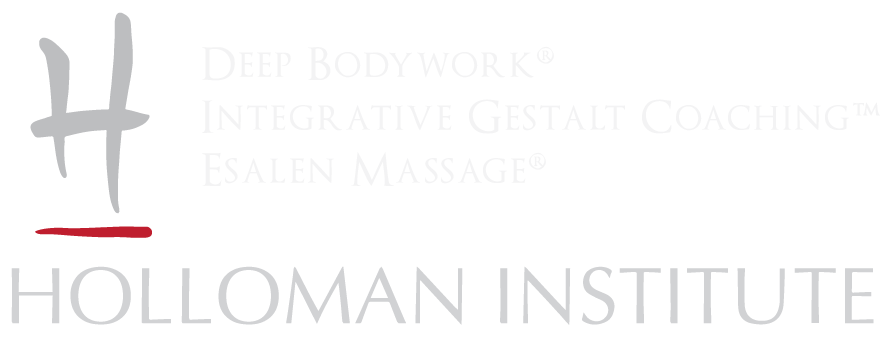This post was inspired by the following question I received by e-mail from a student a few weeks ago:
I have a question about massage that I think you can shed light on. I give my mom massage every few weeks. She has post polio syndrome and suffers from arthritis, migraines, chronic fatigue, and a lot of pain and tenderness. She cannot tolerate very deep work. The times that I work with her and her edge of the amount of pressure she can tolerate she will typically feel great in the hours following our session and then wake up the next day feeling like crap (headache, tense, pain). I remember you giving a great explanation of why this happens and I cannot remember all the details. Could you please enlighten me… again? Thank you!
This question relates to an important subject for anyone doing deeper therapeutic work with clients suffering from acute and/or chronic pain. By “deeper therapeutic work”, I mean not only methods which reach physically into the body’s deeper soft-tissue layers, but interventions such as acupuncture and osteopathy, which affect an individual’s energy system. Often, within 48 hrs. of receiving Deep Bodywork®, or an Esalen® Massage, patients will experience an aggravation of their complaints which can last for up to 48 hours. (On rare occasions aggravations can take up to 72 hrs. to appear, and last more than 48 hours. These cases are exceptions seen by practitioners working frequently with people suffering from acute and chronic pain.) This process can be disconcerting for clients because the body appears to be signaling that it is getting worse rather than better.
What is happening here, and why does the symptom picture of a client often worsen in the short term before improving? I have come to understand this process in the same way that I understand how the body produces fever or local inflammation as it battles microbial invasion. Although these processes are painful, they are an indication that the body’s immune responses are functioning effectively. The therapeutic aggravation experienced after an effective bodywork session is similar. As lesions within muscle, connective tissue, and bone are unwound, the body will focus energy, primarily in the form of increased fluid exchange, to the area(s) in question. Because these areas have become tender due to their acute or chronic distress, increased fluid activity will aggravate the sensations of pain in the short term. As tissues heal through an increase in this self-organizing activity, the pain will subside, and within 48 hrs. after the beginning of the aggravation, the actual healing result of our work becomes measurable. If your clients’ initial complaints have improved from what they were before you touched them, then they have experienced a classical therapeutic aggravation. If their complaints remain as they were before treatment, then one of two things may be happening:
A) You are dealing with a very complex case that requires long-term treatment, and involves the unwinding of organismic distress on many different levels. Trauma victims often exhibit this type of complexity, involving emotional as well as somatic barriers to healing. Improvements will be, particularly at first, very gradual, and test the practitioner’s ability to understand and appropriately unwind, layer by layer, the barriers to healing as they arise.
B) This is a case where some other organic process is involved that requires a different approach. Examples are undiscovered auto-immune disorders like Rheumatoid arthritis, Lupus, and Fibromyalgia which can generate recurring pain that responds quite differently to touch than in cases where such processes are absent.
Following are three examples from my clinical practice where therapeutic aggravations where apparent, but indicative of different pathological conditions responding differently to treatment with Deep Bodywork and Esalen Massage:
1) A client comes to me with severe lumbar pain, and I treat him once a week over the course of six weeks with deep bodywork. He aggravates according to the 48 hr. rule mentioned above, improving after the aggravation subsides, but the improvement doesn’t hold. The following week we are back to where we started. I suggest to him consulting with his physician to investigate if some other organic process might be involved, acting as a barrier to improvement. The results of his blood work show him to have rheumatoid arthritis.
2) A client comes to me, also with chronic back pain, this time so severe that he can barely stand and walk upright. He has been told by a specialist that he will need a spinal fusion to deal with the condition. He comes to me as a last resort in order to avoid surgery. I work with him over a nine-month period, once a week. Each session is followed by a very difficult aggravation, following the 48 hr. rule. Progress is very slow for the first three months. The client however reports that he senses the work is “doing something positive”. Starting around the fourth month, my client begins to report a marked change in his amount of pain, and his posture begins to improve. By the ninth month, his pain is almost completely gone, and his posture is almost normal. He still cannot tolerate strenuous physical activity, but spinal fusion surgery is no longer a consideration.
3) A woman in her early sixties comes to me with severe hip pain, and has been told she will need a hip replacement. I work on her, discovering an extremely tender trigger area in the Tensor fasciae-latae of the hip. I focus on this area, which creates an immediate aggravation, lasting about 24 hours. The pain in the hip completely disappears, as do any considerations of hip-replacement surgery. The hip has remained pain-free for ten years now. This result was achieved with 1 session lasting 75 minutes.
The above examples demonstrate how a therapeutic aggravation can occur in a variety of different situations, giving us, in each case, different information. In the first, the lack of improvement, despite the aggravation, indicated the probability of other organic factors involved in the client’s pain. In the second, progress was slow, yet steady, indicating the level of complexity of the case. A therapeutic aggravation occurred with each process of unwinding over a nine month period. The third case was a dramatic recovery after only one session, accompanied by a very uncomfortable aggravation of symptoms over a 24 hr. period, indicating a lesion, while very uncomfortable, of lesser complexity.
As a final caution: Be careful about working with cases of acute and chronic pain, because therapeutic aggravations can be difficult to guide people through. It is important to inform potential clients about how such aggravations work and to allow them to decide, on the basis of that information, if they wish to be touched or not. Second, be clear as to your own capabilities of guiding people through this process. If you have any doubts, it is probably better to refer individuals in acute or chronic pain to a more experienced practitioner.
Please feel free to post your comments and/or questions.
All the best to everyone!
Perry

